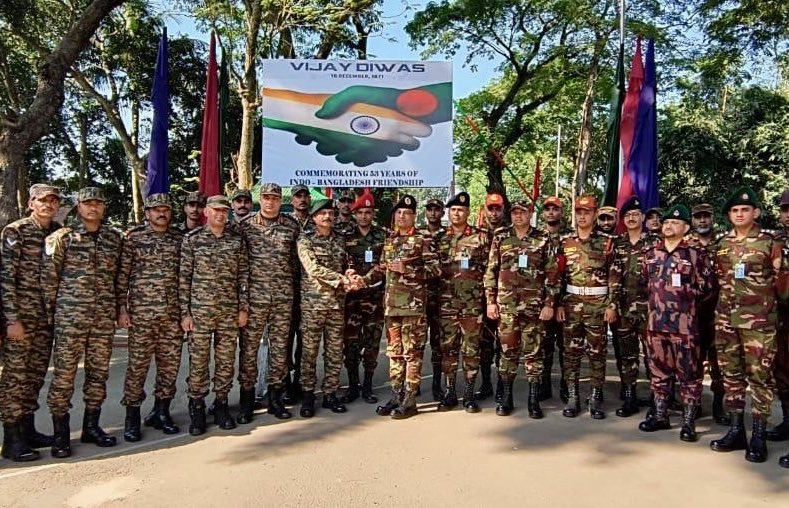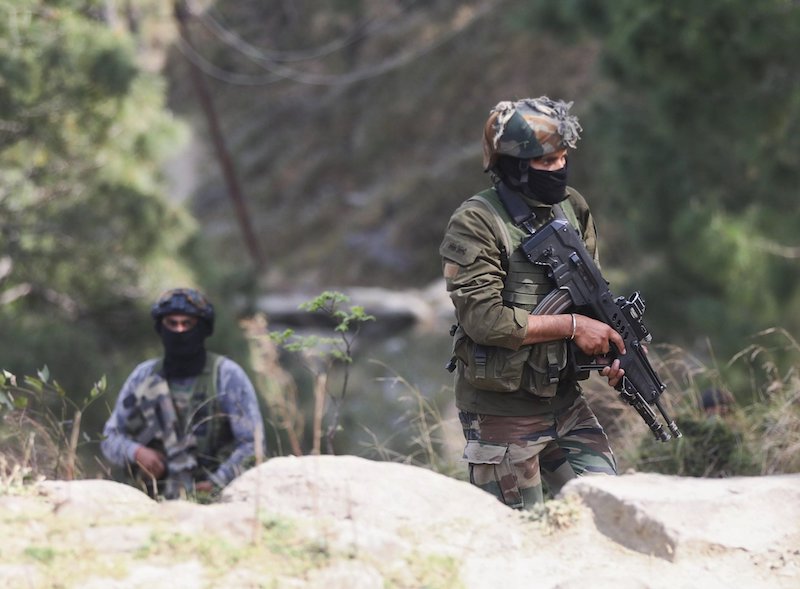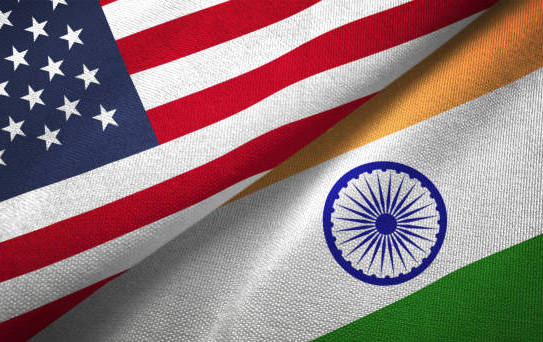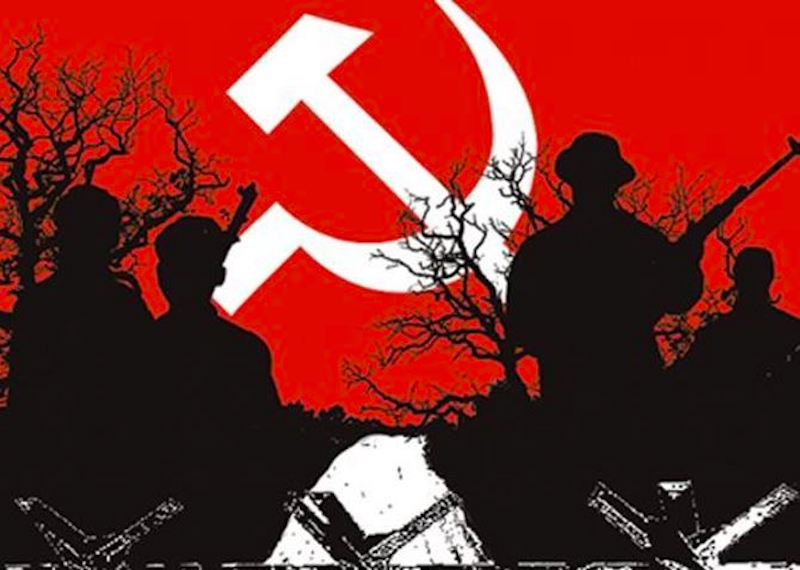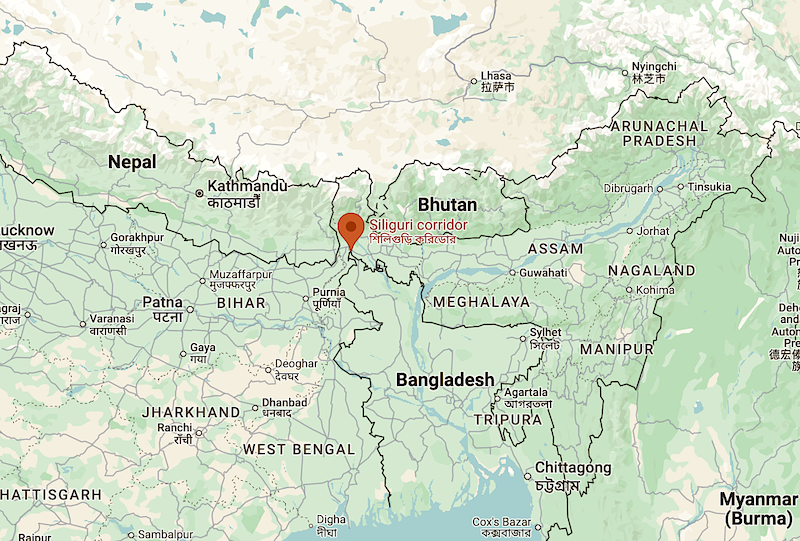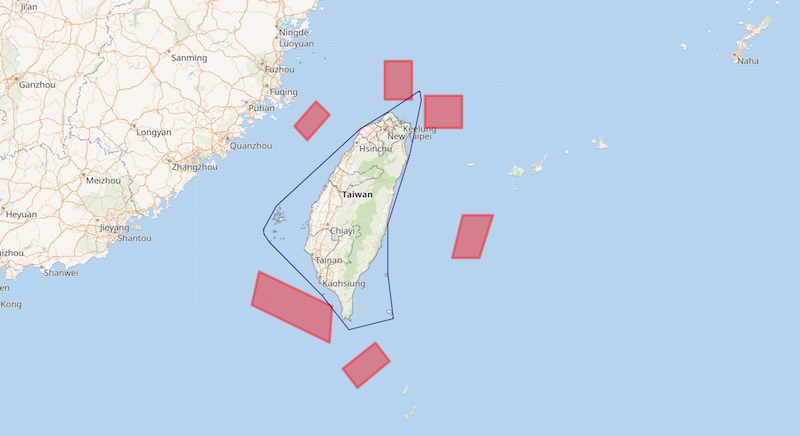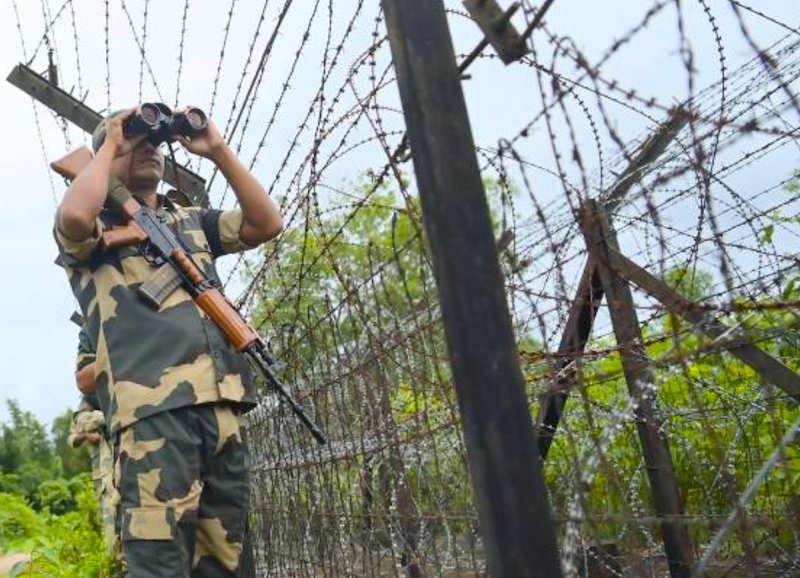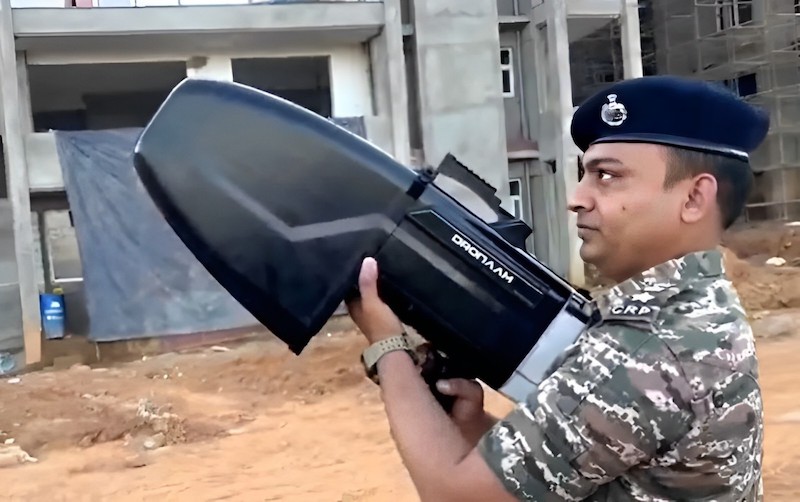 Screenshot taken from a video shows a CRPF man handling an anti-drone gun in Manipur. (Via X)
Screenshot taken from a video shows a CRPF man handling an anti-drone gun in Manipur. (Via X)
The state of Manipur has been in the throes of violence since May 2023, causing human misery, deaths, and large-scale displacement of people. The trigger for this violence was a high court directive to the Manipur government to submit recommendations for including the Meitei community in the list of scheduled tribes. The order has since been modified, removing paragraph 17(iii), which directed the inclusion of the Meitei community in the list of scheduled tribes.
In addition to this order, there was an existing simmering anger among the Kuki community against the Meitei-dominated state government, which was fuelled by a crackdown on drug cultivation and an eviction drive against illegal migrants. The state administration claimed that illegal migrants from Myanmar had settled in the state’s reserved and protected forests, which led to large-scale protests in Kuki-dominated districts.
The state was unable to control the ethnic violence, illustrating a failure of governance and the security apparatus. The ineffectiveness of the state government and central security apparatus, overseen by the central government, led to around 300 deaths officially, large-scale violence, and mass displacement of people. This also created a physical and mental chasm between the Meitei community and the Kuki tribespeople.
The ethnic violence led to the creation of a buffer zone to separate the two communities involved in the conflict. There are no known precedents of buffer zones within the precincts of a country, except for buffer zones involving sovereign states with unresolvable territorial disputes. This makes Manipur an exception with the dubious distinction of a state-created buffer zone to separate communities.
Read also: Robust HUMINT network is key to defeat militancy in J&K
While this buffer zone restored peace to some extent, it increased the physical and mental divide between the two communities. Despite the buffer zone, the administration failed to rein in violent elements and was unable to retrieve weapons and ammunition looted from state armouries, which are now being freely used by anti-national elements.
Since the beginning of September 2024, there has been a sudden spurt in violence, leading to widespread protests in various parts of Manipur on September 9. This forced the administration to impose an indefinite curfew in Imphal East and Imphal West districts. The state has also ordered the suspension of internet services for five days from September 10 to 15.
Now, the state is again in turmoil, with clashes between security forces and students who attempted to march towards Raj Bhavan. The Union government has ordered additional deployment of security personnel to control the situation.
It appears that the situation in Manipur has long surpassed the law & order threshold and entered a low-intensity conflict. An indicator of this is the news reports that the Manipur Police have already acquired 7.62mm medium machine guns (MMGs), which have an effective range of 1,800 metres and can discharge high volume of fire. MMGs are meant to fight defensive battles to pin down attacking troops and are not intended for law & order situations. The acquisition of MMGs by the Manipur Police is an acknowledgement that the state has now turned into a warzone, controlled by warring community factions.
Read also: Spike in J&K militant attacks – time to reanalyse and restrategize
Therefore, the security apparatus needs to treat the Manipur situation as such – a low-intensity conflict.
The situation in Manipur needs delicate handling, continuous engagement, and out-of-the-box statesman-like thinking. In view of the recent use of unmanned aerial vehicles (drones) and rockets by militant groups to attack each other has rendered the security forces on the ground ineffective. This makes it imperative to strengthen the security umbrella to tame both ground and aerial (drone and rocket) attacks.
The militants have likely adopted this new methodology of using drones and rockets to defeat the concept of the buffer zone, which prevents physical movement from plains to hills and vice versa, thus posing a new challenge to the security forces. If this methodology is not nipped in the bud, it may become a routine strategy for both sides to launch aerial attacks against each other. This will then invariably defeat the huge security deployment on the ground.
Read also: India-Myanmar Border – Build fence, strengthen free-movement regime
On September 1, bombs were dropped on Koutruk and Kadangband villages in Manipur’s Imphal East district using drones, marking a serious escalation in violence between Kukis and Meiteis. Two individuals were killed and nine others were injured in these initial drone-bomb attacks. More attacks followed the next day, destroying India Reserve Battalion bunkers in Imphal East district’s Meikhang village. The new tactics is to defeat shoot-at-sight orders against those crossing the buffer zones between the Imphal valley and surrounding hills. In all probability, Kuki-Zo militants allegedly carried out these attacks.
So, what needs to be done to restore order and peace in Manipur?
The first step is to accept that Manipur has spiralled deep into a low-intensity conflict zone, aided by external forces. It needs a solution to ensure peace in the state and stop the spread of conflagration.
Therefore, the restoration of peace should be a four-stage process:
1. Implementation of President’s Rule
The initial and crucial step in addressing the dire situation in Manipur is the imposition of president’s rule. This measure would effectively transfer the state’s governance to the central government, allowing for more direct and decisive action in restoring peace and order.
Read also: Command duality in border guarding is against national security
2. Establishment of Unified Security Command
A unified security command, under the leadership of the Eastern Army commander, must be instituted with immediate effect. This command structure should be vested with the authority to implement all necessary measures to re-establish peace within the state.
Following this, it is imperative to extend the Armed Forces Special Powers Act to encompass the Meitei-dominated Imphal valley. This extension would empower central forces to operate with greater efficacy, thereby reinforcing the security apparatus to counter both terrestrial and aerial threats.
Subsequently, a proactive campaign must be launched to disarm militant factions and recover the thousands of sophisticated weapons that have been looted from the state’s armouries.
It is of paramount importance to recognize that the leniency shown by the state towards groups implicated in last year’s violence poses a significant security risk. The potential for these groups to mount offensives against the Kuki tribespeople and escalate armed conflict remains a grave concern. To mitigate this threat, all such organizations must be officially designated as unlawful, thereby curtailing their activities and influence.
Read also: Manipur crisis is becoming national threat, govt must act now
3. Enhancement of Border Security Measures
The fortification of border security is crucial, as it underpins national security, ensures public safety, and safeguards the economic prosperity of border communities. The India-Myanmar border, spanning 1,643 kilometres, traverses four states from north to south of India’s northeastern region: Arunachal Pradesh (520 km), Nagaland (215 km), Manipur (398 km), and Mizoram (510 km). This extensive frontier is currently characterized by its openness and porosity.
It is imperative that the central government acknowledges the current inadequacy of border protection along the India-Myanmar boundary. At present, there is a lack of professional, round-the-clock forward deployment of security forces. This deficiency in forward domination has resulted in unrestricted cross-border movement. To address this, there is an urgent need for continuous forward deployment along the entire border length.
The existing border-guarding strategy, which is entirely reliant on the Assam Rifles, has proven ineffective in curbing illegal cross-border activities. Therefore, it is essential to deploy a dedicated, professional force specifically trained in border security operations. These forces must maintain a presence directly on the “zero line” to ensure effective physical guarding of the border.
The Border Security Force has demonstrated its expertise and professionalism in safeguarding two of India’s most challenging and hostile borders with Pakistan and Bangladesh. In light of this, the government should give serious consideration to deploying the BSF along the India-Myanmar border. This measure would significantly contribute to stemming the tide of illegal cross-border movement.
Read also: India-Myanmar border guarding needs a fresh approach
4. Expedited Border-Fencing Project
The final step in this comprehensive strategy involves the swift implementation of the previously announced border fencing project. This initiative should commence immediately following the forward deployment of the specialized border-guarding force. The completion of this fencing project will serve as a critical physical barrier, complementing the human and technological security measures already in place.
By methodically implementing these four steps, the central government can effectively address the multifaceted challenges currently plaguing Manipur, paving the way for the restoration of peace, security, and stability in the region.
It is a fact that escalation in conflict through drones and rockets amounts to an act of terror. The government needs to appreciate that if this strategy of using aerial routes to spread violence through drone bombings, rockets, and rocket-propelled grenades (RPGs) is adopted by both factions, it will lead to a situation that may go beyond the threshold of low-intensity conflict, thus plunging the whole geographical area and possibly the region into a quagmire of violence.
Read also: Manipur crisis is becoming national threat, govt must act now
There is a need to deploy anti-drone systems on priority, strengthen human and technical intelligence to neutralise such threats, and simultaneously strengthen border security. There is also a need to start political engagement with both communities under the direct supervision of the Centre, which may not be feasible without the imposition of president’s rule in the state to restore peace and order.
Disclaimer: The views expressed in the article are the author’s own and don’t necessarily reflect the views of India Sentinels.
Follow us on social media for quick updates, new photos, videos, and more.
Twitter: https://twitter.com/indiasentinels
Facebook: https://facebook.com/indiasentinels
Instagram: https://instagram.com/indiasentinels
YouTube: https://youtube.com/indiasentinels
© India Sentinels 2024-25

